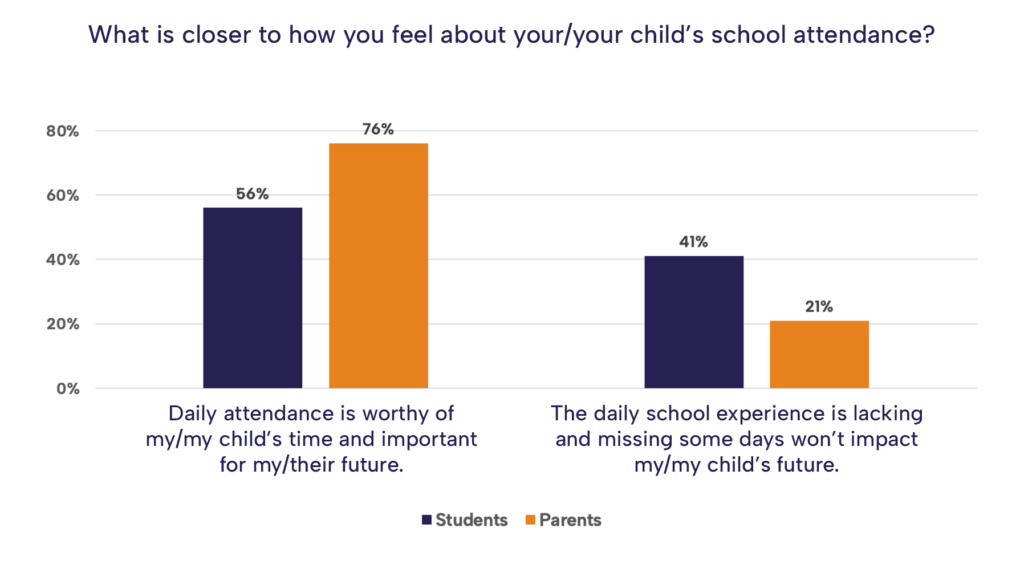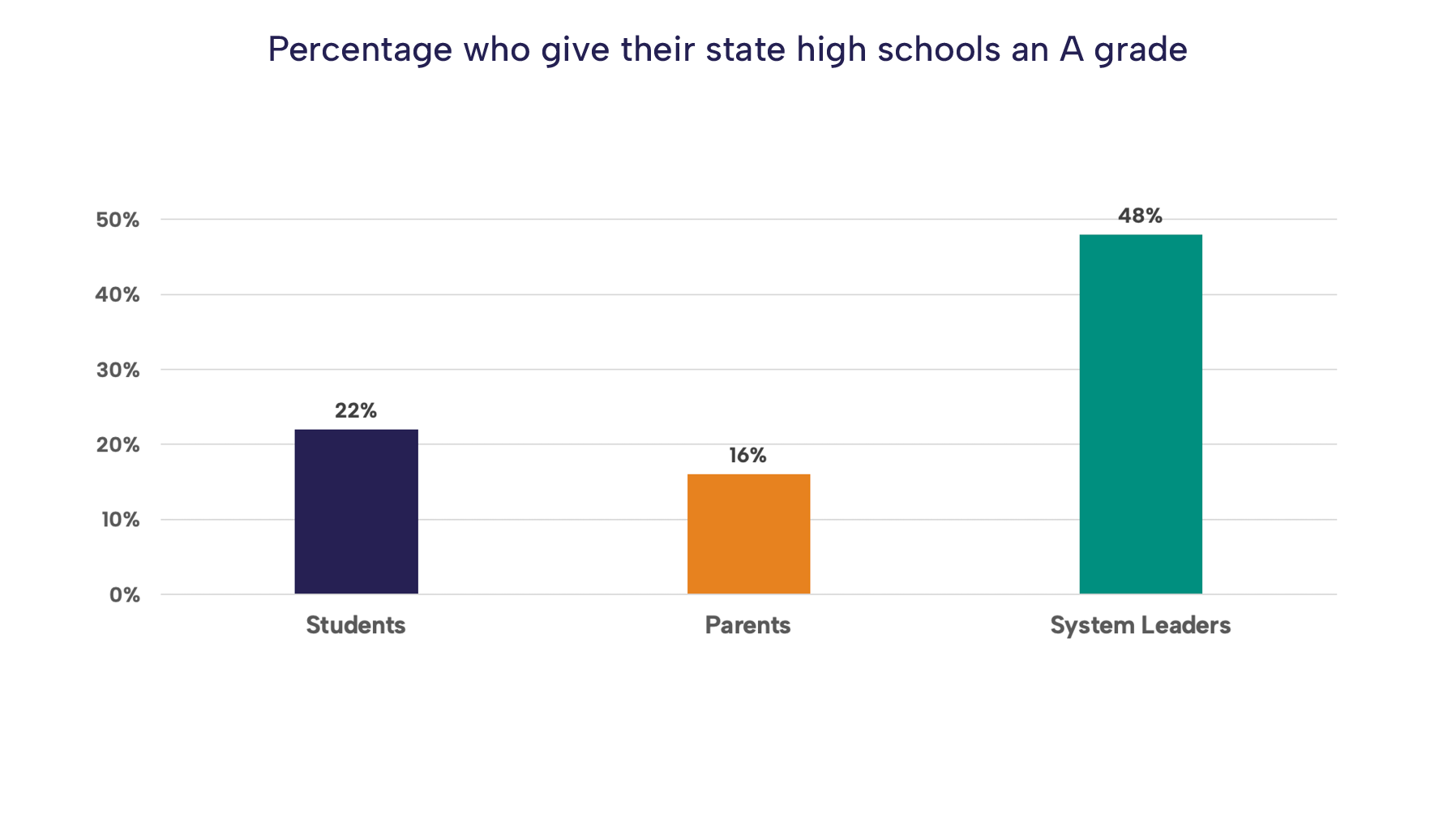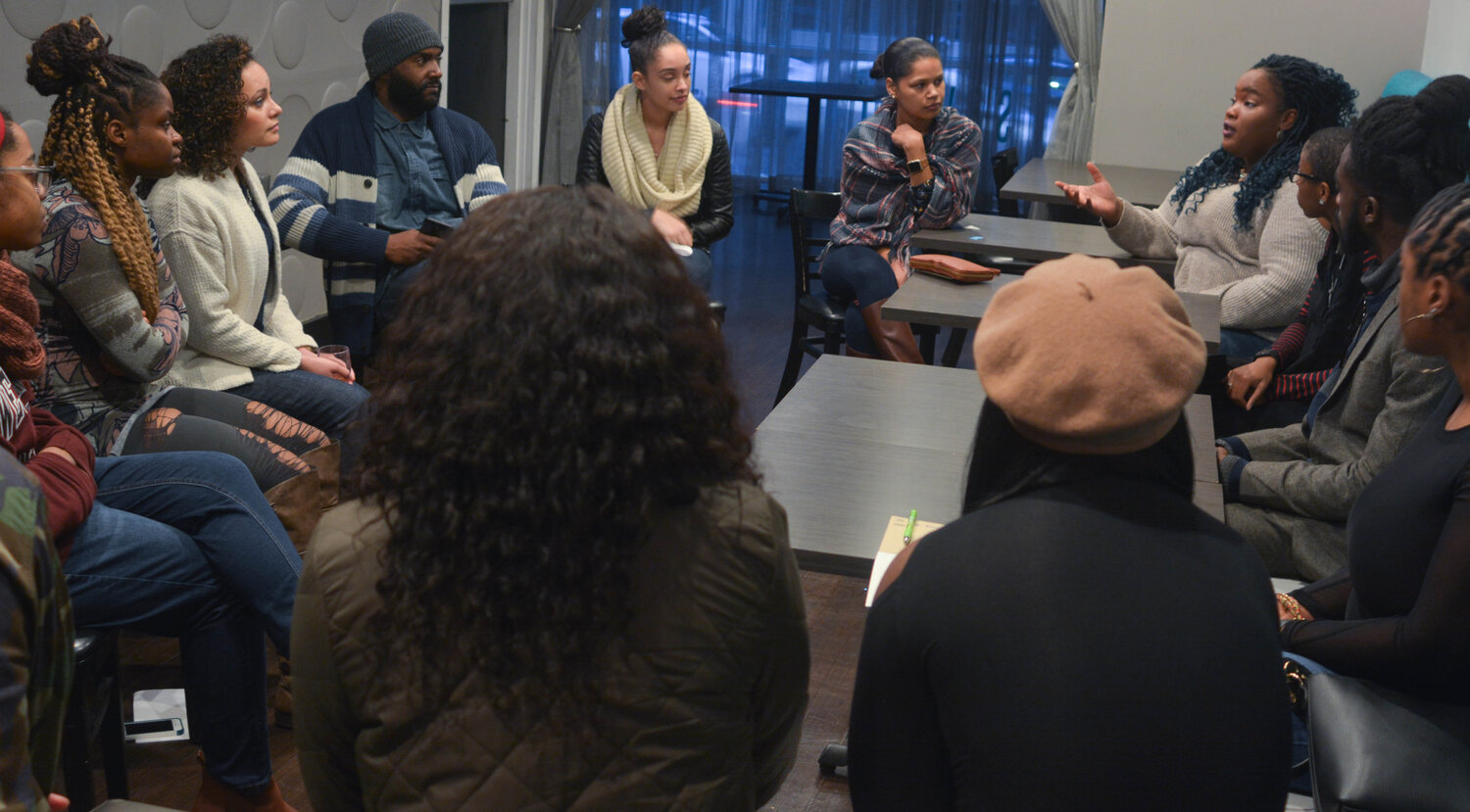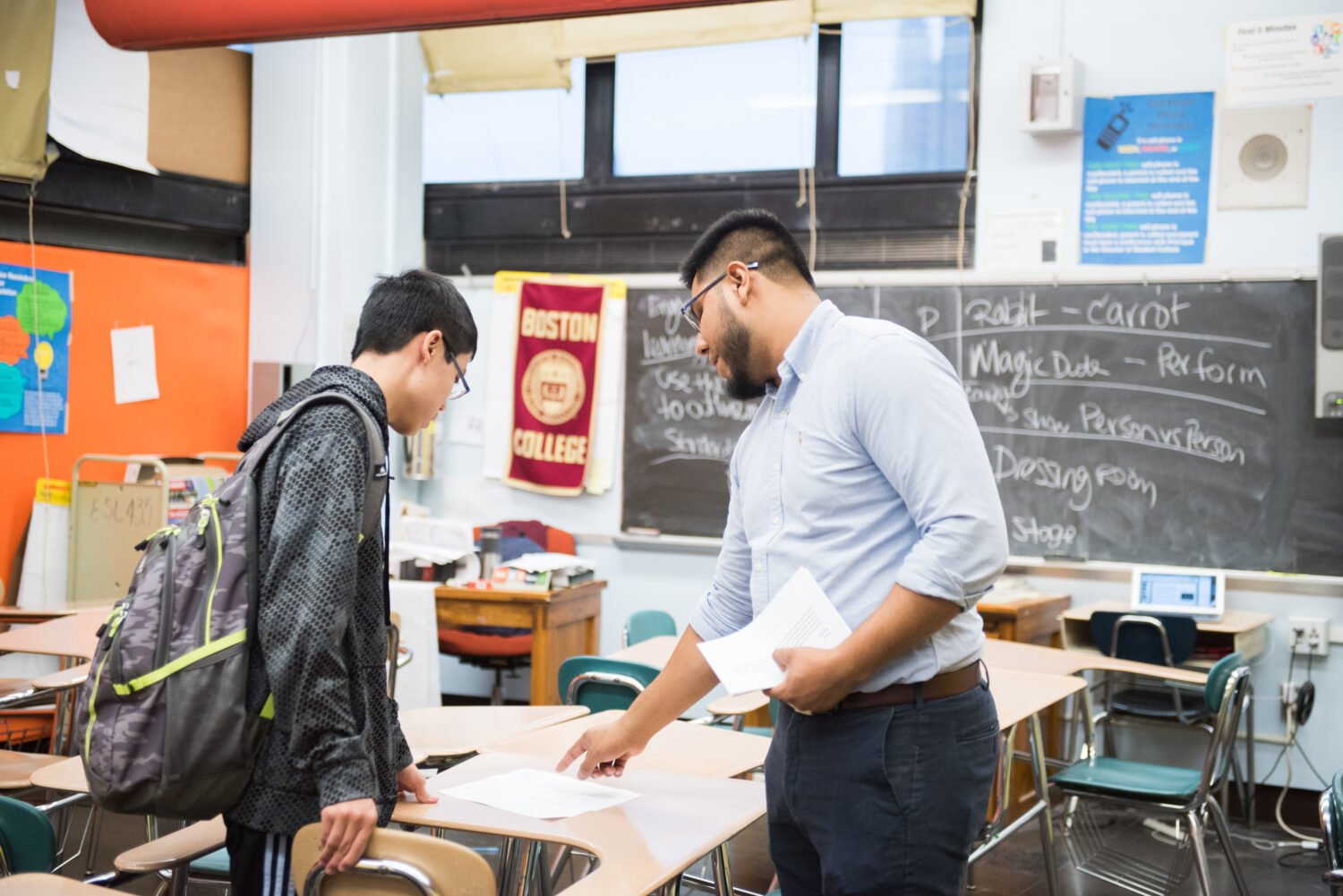At Barr, we believe that people who are closest to the challenges in our education system must be part of shaping solutions. Elevating the voices of these stakeholders – especially of young people and families of color and those who are economically disadvantaged – has been a key priority of our Education program since its inception. For that reason, we have partnered with Beacon Research to conduct periodic polls of students, parents/caregivers, teachers, principals, and school district leaders from across New England to gather their views on the state of high school in their communities.
Our 2024 poll – the third in a series initiated in 2019 – dug into a number of critical issues, including perspectives on school attendance, statewide graduation requirements, and the purpose of high school.
The results of the latest poll, which included 1,002 parents, 1,002 students, 407 teachers, 101 principals, and 75 system leaders, are available in Barr’s Knowledge Center. Below, we highlight a number of findings that we believe are especially important for anyone seeking to improve high schools in the region.
1. Both students and parents are lukewarm about the high school experience

Forty-four percent of students and 42% of parents give their local high school a B grade. More students and parents (35% and 33%, respectively) give their schools a C or lower than give their schools an A. What’s more, about 80% of both students and parents believe that their high school needs to change – and of those, roughly a third say that major changes (as opposed to minor tweaks) are required. Black and Latino/a students and parents earning less than $60,000 per year are especially likely to say that their high school requires major changes.
Similarly lukewarm perspectives emerge from questions that dig deeper into the high school experience. For example, just 54% of students give their school an A or B for preparing them to use research and data to make decisions and less than half gave their schools an A or B for making classes interesting and engaging.
2. Many students and parents believe that the school experience is lacking and missing a few days of school doesn’t matter

Districts across the country are struggling to reduce chronic absenteeism rates, which have ballooned since the COVID-19 pandemic. Many have turned to efforts aimed at getting students back into school buildings, such as calls or visits home, with mixed results. Findings from the latest Beacon Research poll provide additional insights into the chronic absenteeism challenge and why current approaches might be falling short.
The poll asked both parents and students whether they believed that daily attendance was worthy of students’ time — or whether they thought that the school experience was lacking and missing a few days would not affect a young person’s future. In response, 21% of parents and a striking 41% of students selected the latter option, saying that the school experience falls short and missing a few days will not impact young people’s futures. These results, combined with the less-than-stellar grades parents and students are giving their schools, suggest that some young people are simply voting with their feet.
Patterns in parent and student poll responses both support this idea, and provide additional insights. For example, students who said that their high school met their needs were more than twice as likely to say that daily attendance was worthy of their time than students who said their needs weren’t being met. Similarly, nearly 70% of students who felt that their voice mattered in school said that daily attendance was important — as compared to just 29% of those who felt their voice did not matter.
If districts want to re-engage young people and curb chronic absenteeism rates, improving the high school experience may be key. Consider this piece, which highlights Salem Public Schools’ successful efforts to do just that. By lifting up student voice and choice, offering community-based learning experiences, and carefully monitoring data on student engagement and outcomes, a pilot program in the district reduced chronic absenteeism rates by more than half.
3. Educators, and especially education leaders, have a far more positive view of their schools and school systems than students and parents

To improve student learning experiences and outcomes, education leaders, educators, students and families must first understand each other’s perspectives on how well schools are working now. Yet results of the Beacon Research poll point to significant disconnects between how different stakeholders view their schools. For example, 48% of system leaders gave their state high schools an A grade — more than double the percentages of students and parents. Similar trends emerged across nearly every question related to school performance:
- 76 percent of system leaders graded their schools an A or B on making sure students see their identity and life experiences reflected, while only 49 percent of students graded their school the same.
- 82 percent of system leaders gave their school system an A or B on making students aware of higher education opportunities, compared to just 58 percent of students and 60 percent of parents.
- 73 percent of principals graded their school with an A or B on helping students distinguish between true/false information online while only 42 percent of parents and 53 percent of students said the same.
Through our work with schools, districts, and family organizers, we have seen a number of promising approaches for how school communities can uplift the experiences of all stakeholders, and especially of systemically marginalized young people and families. For example, in recent months several of our partner schools and districts have organized Student Summits — structured opportunities for educators to deeply listen to young people’s perspectives on school practices and the student experience, and to jointly develop action steps to address student concerns.
Meanwhile, nonprofit organizations such as Parents Leading for Educational Equity, Parent Villages, and SchoolFacts Boston are helping strengthen parent capacity to advocate for their children and school communities. Through trainings that demystify how schools and districts make important decisions (such as what classes or student supports to offer) and help parents effectively push for change, these organizations and others are supporting families in making their voices heard.
4. There is a lack of clarity around the purpose of high school
A key lesson learned from Barr’s 10+ years of supporting high school improvement efforts is the importance of starting with a shared vision for the purpose of high school — a vision that is co-constructed by students, educators, families, and community leaders. Without that shared vision, improvement efforts either do not get off the ground at all, or fall apart the moment a leadership change comes into play.
Aligning on vision is particularly important today, as research, experience, and now poll results show that perspectives on the purpose of high school are changing rapidly. Consider: In 2019, 61% of students surveyed by Beacon Research said that it was extremely important for high schools to prepare young people for college. That same year, 66% said it was extremely important for high schools to prepare students for careers, and 75% said the same about life skills.
By 2024, however, young people’s perception of the importance of each of these widely accepted high school goals dropped dramatically. Today, just 42% say it is extremely important for high schools to prepare students for college, 44% say the same for careers, and 53% say the same about life skills. Parents’ responses show similar declines in the perceived importance of these goals.
These responses beg the question: What do young people and families see as the main purpose of high school today – and how can schools better live up to that purpose?
A recent report by CRPE, for example, finds that students want high schools to prepare them not just for college or work, but to live a “good life” on their own terms. Meanwhile, local communities, such as those in the Portrait of a Graduate cohort, have held many conversations with students, families, teachers, local businesses, and other community members to develop a collective vision for student success. With increased clarity about the purpose of high school, communities are now transforming student learning experiences to align with their vision.
The high school years can alter the trajectory of a young person’s life. With intentional focus on the experiences and perspectives of students, families, and educators, we can better align the high school experience to be purposeful, high-quality, and worthy of students’ time in order to support them to thrive.





